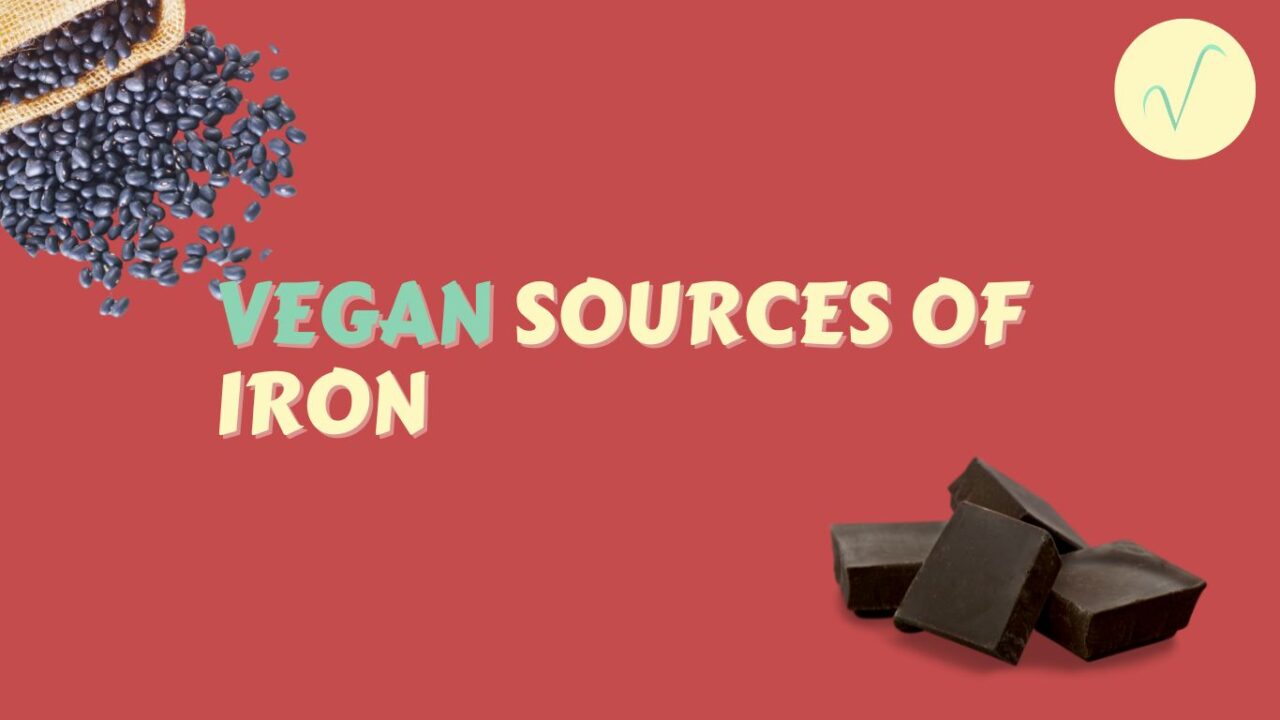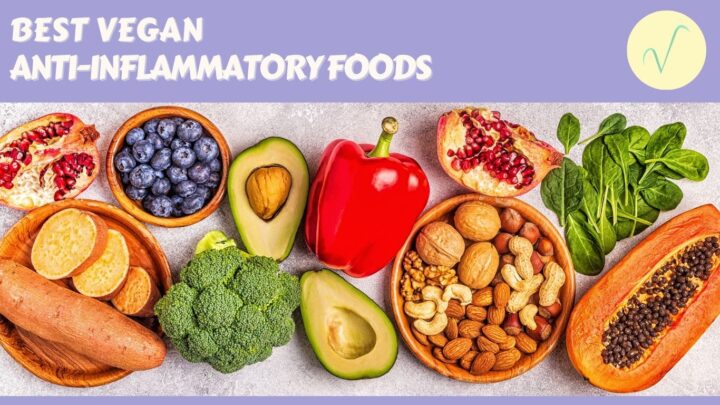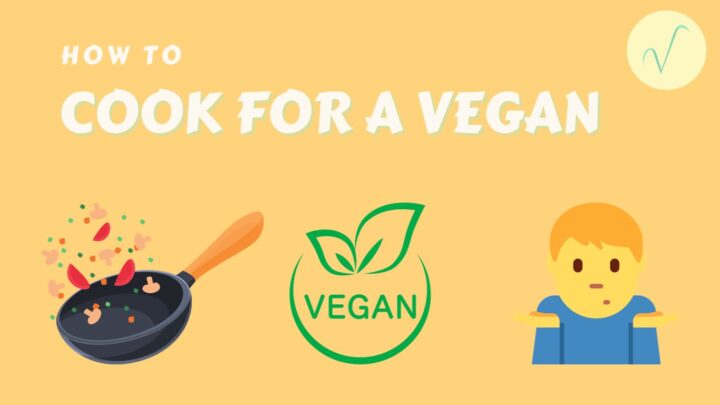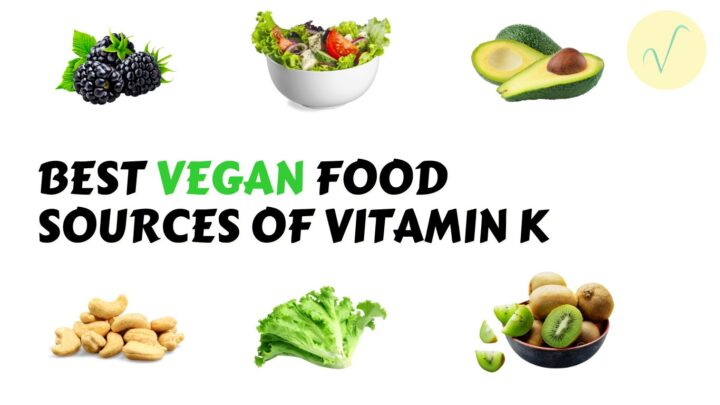Iron is an important mineral which helps to transport oxygen around the blood, and it is a common misconception that vegans do need receive enough of it.
Iron can easily be sourced from a wide variety of vegan foods, with smart planning and some basic knowledge of plant-based nutrition, you too can ensure, as a vegan, you don’t slip up and become deficient.
Read on to discover 19 random iron-rich vegan foods to incorporate into your diet.
Quinoa
Quinoa is an ancient grain, which is technically a seed, is kind of like couscous but gluten free. This versatile seed, when cooked, provides 15% of the RDI of iron per cup cooked. Try our sun dried tomato and mushroom quinoa today.
This grain cooks like rice (1:2 quinoa to water, 15-20 minutes) and so makes a suitable replacement, we also recommend the use of it as a breakfast cereal, also works great for salads.

Lentils
Lentils are my favourite pulse, and come in varieties: Red, yellow, green, brown, french, beluga, with slight differences in texture and consistency when cooked.

These pulses are a great source of satiating protein that can work for many meal types, such as vegan lentil dahl, vegan lasagne as well as veganised spaghetti bolognese.
As well as being high in healthy carbs, fibre and protein, these nutritional powerhouses also pack 18% of your day’s iron in merely 100g of cooked lentils.
Sesame seeds
Commonly used in Asian cuisine, these small crunchy seeds are great sprinkled on top of your rice, curries, salads and avocado toast!
Tahini, which is sesame paste, is practically a concentrated version of sesame seeds, which can be incorporated into salad dressings and vegan cheese sauces.

Just one tablespoon of sesame seeds, which can equate to a pinch to sprinkle on the salad, contains 7% of your day’s iron – Not bad for something you wouldn’t notice.
Black beans
Black beans are a common Mexican staple, also used around the world in dishes, such as cuban black beans, which bases its glory on the tasty pulses!

1 cup of cooked black beans contains 28% of your daily recommended iron, combined with quinoa and a sprinkle of sesame seeds, you’ve got over 40% in one meal!
Dark Chocolate
You wouldn’t think once going vegan you could rely on chocolate as your go-to iron source. Well, you still shouldn’t – as it’s rather high in calories.

1 ounce of dark chocolate with 80% cacao solids, provides 19% of your daily intake of iron. Keep it limited, but know you can boost your daily intake with a treat every once in a while.
Cashews
Cashews are my personal favourite nut – No, that’s almonds, nah actually Brazil nuts.

Anyways… These creamy, tasty nuts are a great source of iron, with a 28g handful containing 10% of your daily intake, be sure to incorporate this into your weekly food rotation!
Cashews are also very versatile, other than being just a great snack, they can also be used for thickening sauces and for plant based cheese recipes.
Raisins
Raisins aren’t enjoyed by everyone, we’ve all seen that meme about trust issues and raisin cookies.
But when I was a kid, I loved them, then when I went vegan I learned to love them again, especially with nuts.

Only recently discovered that they’re a great source of iron, providing 5% in a 50g handful – Mix them in with your cashews for a great iron-rich snack to munch throughout the day.
Black eyed peas
No, not the hip hop group, the crock pot crew.
Black eyed peas are one of my favourite beans, apart from black beans, and go great with pretty much anything. One of my personal favourite recipes being a good old black eyed pea salad.

100g of these legumes contain 14% of your day’s iron, combined with collard greens and quinoa you can easily get half your day’s intake from one meal alone!
Hemp Seeds
You may or may not have heard of hemp seeds, or even considered them as a food, but they very much are, and not very far off from vegan superfood status.

Hemp seeds have crunchy outer shells but also come in de-shelled forms, great on salads, soups and blended in smoothies – Just 28g, around 3 tbsp, provides 15% of your day’s iron, as well as being a vegan source of zinc and magnesium.
Mushrooms
Some people love them, I say what’s not to love?
Mushrooms are meaty, more-ish and absorb flavours beautifully, with varieties rich in D, C and B-vitamins.

You’d be happy to know that one cup of cooked white mushrooms provides 15% of the RDI of iron, easily added to a stew for a nutritional boost!
Oats
Oats are versatile and can be incorporated in a very many recipes. I personally add a tablespoon to my smoothies, utilise them in some vegan burger recipes, and make energy-rich vegan breakfast bars using them as a base.

1 cup of cooked oats contains around 19% of your daily intake, as well as other nutrients such as zinc, magnesium, fibre and plant protein. The good thing is that you can also get gluten free oats, for a great plant-based source of iron-rich protein.
Blackstrap molasses
Blackstrap molasses is a by-product of sugar processing, commonly used in baking as a colour and natural sweetener, sauces and marinades, and can be drizzled on top of oats and yoghurts.

I’m sure you’re surprised to see this on the list, but best believe blackstrap molasses are actually more than a half decent source of iron.
It provides 10% in 2 tablespoons. I personally enjoy 1 tbsp in my pre-workout smoothie to boost the iron content.
Amaranth
Another gluten-free grain, which is again, technically a seed – a pseudocereal.

Great to thicken soups, as a base for breakfast cereal and as your go-to side grain, 100 grams of cooked amaranth provides a whopping 42% of your day’s iron.
Try these amaranth fritters today!
Dried apricots
A great substitute for sweets and excessive snacking alternative, I’ve learned to incorporate dried apricots into my daily diet to help curb cravings.

1 cup of dried apricots provides 42% of your daily intake of iron, so think about that next time you want something to chew on – They’re really nice too!
Green Beans (French Beans)
Green beans are a great food to have on the side of any meal. They’re very plain and complementary to anything, from lasagne to a buddha bowl.

1 cup of green beans provides 5% of iron, a great thing to remember next time you steam your greens.
Pumpkin Seeds
One of my favourite seeds, as they are 1. Tasty, 2. High in protein, and 3. High in nutrients: Zinc, Iron, Magnesium and more.
Just one handful of pumpkin seeds (approx. 28g) provides 14% of your day’s iron.

Easy to sprinkle in soups, blend in smoothies and eat as a snack, never fall short of your daily intake again with a daily dose!
Large white beans
These beans, not as commonly known as white beans, but “baked beans”, are actually one of the beans with the highest concentration of iron.

In 1 cup of cooked white beans you can expect as much as 37% of your daily intake of iron, pair this with quinoa, green beans and a sprinkle of pumpkin seeds – you’ve got nearly your whole day covered in one meal!
Cacao Powder
Not cocoa, CACAO, the raw version of real chocolate.

2 tbsp of this powder in your smoothie provides 10% of your day’s iron, as well as other beneficial nutrients such as zinc, magnesium and copper – Make your own iron rich workout smoothie today!
Dried Mulberries..???
This one may come as a surprise to many, as there are not very many fruits on this list, and I found this out my accident. This was after feeling the energy I got from the combination of pumpkin seeds and dried mulberries I was eating for breakfast.
I looked into the nutritional information for 50g of dried mulberries online, and saw it contained 36% of your days iron; as well as 230% of vitamin C, which helps with the absorption of iron, a match made in heaven!

I found organic mulberries in the local organic shop, but you can find dried mulberries in middle eastern supermarkets, usually.
Honorable mentions
Let’s not forget tofu, dark leafy greens, soybeans and kale. These have iron in some form, and beans in general are not deficient of the mineral.

There are also a few extra pointer to consider for those who are plant-based and are trying to up their intake of the mineral.
Factors that affect iron absorption
Iron intake can be increased, but uptake and absorption depend on a few factors.
Before finishing up this article, let’s go through a few of the factors briefly, now.
Veganism and heme iron sources
As vegan sources of iron are known as non-heme iron, and animal sources of iron, heme iron (more readily absorbed by the body), vegans need to eat significantly more of it to ensure we store adequate amounts.
Ensure to aim for a little more, around 30% more than the daily intake to ensure you’re absorbing the right amount.
Vitamin-C rich foods for iron uptake
Eating foods rich in vitamin C help to absorb non-heme iron, boosting the body’s uptake of it by 300%. Next time consider this and squeeze some lime juice on top of your leafy greens.
Coffee and Tea can affect iron absorption
Drinking coffee and tea can decrease iron absorption by around 50 to 90%, compounds in tea, otherwise known as tannins, which bind to the iron molecules and inhibit the body’s ability to absorb them.
So aim to have tea or coffee roughly 1 hour to 1 hour and a half following your last meal – You should leave 45 minutes after eating before drinking any fluids regardless.
Soaking sprouting and fermenting food for better iron absorption
Phytates are found in numerous plant foods, including quinoa, seeds, and legumes, which can behave like tannins, bind to nutrients and prevent their absorption.
The good thing is, and this is why it is recommended, soaking and sprouting foods can help to lower the phytates in foods – allowing for better absorption of the minerals within.
In essence…
Some inspiration for iron-rich vegan foods to easily incorporate into your daily diet, and some tips on more efficient absorption.
Share this with any friends suffering from anemia and help them increase their intake with natural plant-based sources, drop a comment and see you next time!




